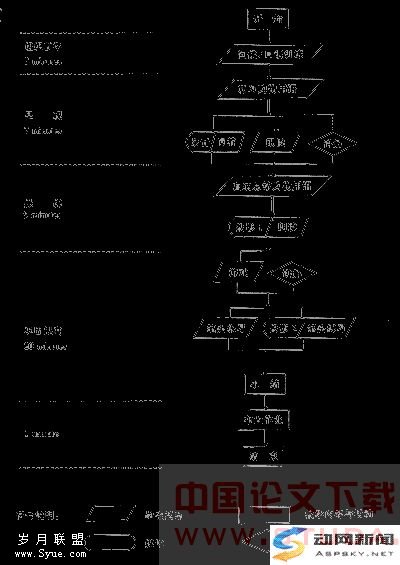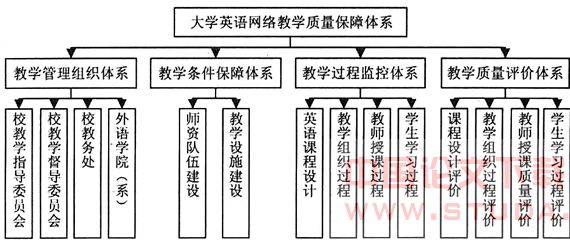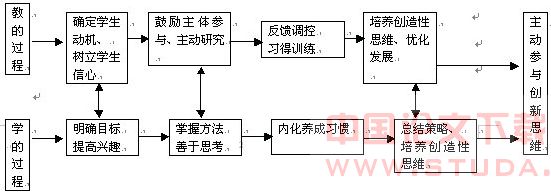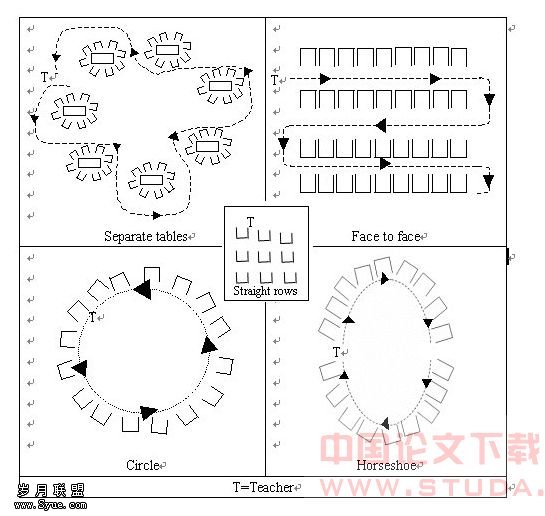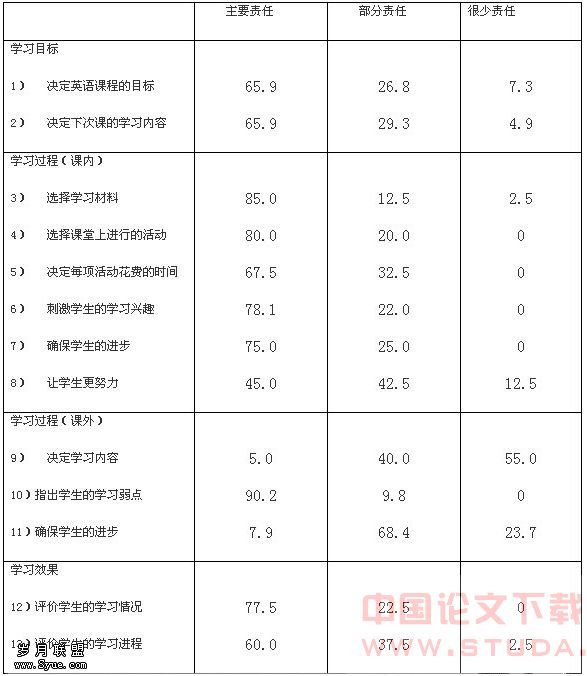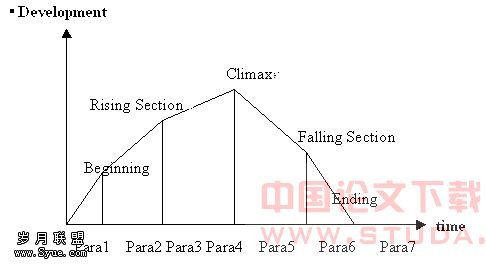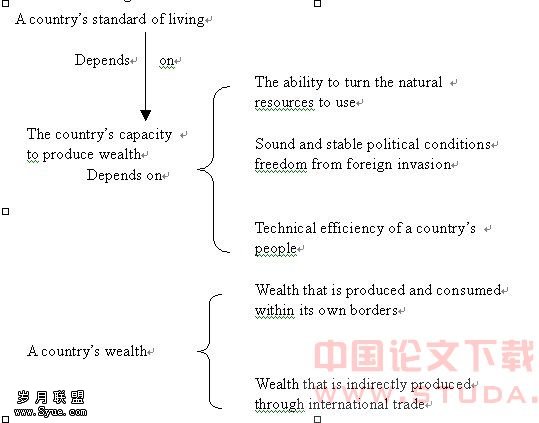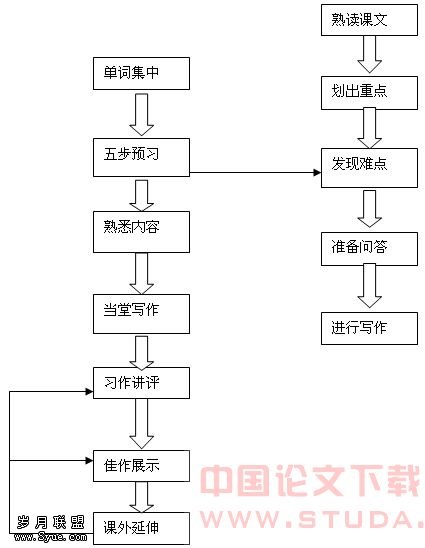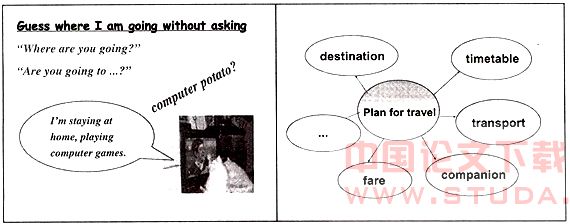普通话语音系统对中国学生英语
[Key Words] pronunciation; negative transfer; Mandarin; English; sound system; common errors
【摘 要】 语音过关是学习的关键,同时也是难点。正确标准的英语发音、得体的语音语调不仅是衡量能否进行有效口语交际的重要尺度,也是作为语言的学习者所必须具备的素质之一。但是,学生在英语发音过程中往往会遇到困难。这是由于汉语的普通话和英语属于两种不同的语系,在语音系统上存在很大差别,同时,由于在第二语言学习的过程中普遍存在着的语言迁移现象,学生在发音上容易受他们的母语,即普通话的语音系统的影响,对英语中发音上的一些差别不能辨别,或者在发音过程中倾向于用汉语中一些相似的音去代替,从而形成发音错误和语音偏差。本文根据语言迁移理论,着重探讨了普通话的语音系统对英语发音的负迁移,通过普通话语音系统和英语语音系统在元音、辅音及语调三个方面的对比,分析了中国学生常见的英语发音错误,并针对这些问题提出了一些解决方法。
【关键词】 发音;负迁移;普通话;英语;语音系统;常见错误
1.Introduction
Language is the most important tool for mankind to carry on communication, while speech is its corporeal outer covering, which relies on the social function of language. Just as the famous American linguist L. Bloomfield pointed out that:“The writing is not a language, but is merely the method to record the language by recognizable symbols. No matter what kinds of words we use to record it, this language will maintain its original form without any change.” In other words, one language may use several kinds of written words for records, but with only a few acceptable pronunciations.
It is clear that phonetics is the most basic element of a language as well as the grammar and the vocabulary that are closely related to it .To command a language and to utilize it freely, one should learn its phonetics item first. Learning English is no exception. [1]
There are a lot of factors that may influence foreign language learning. It is generally believed that “during the process of language study,it’s impossible for learner to achieve the target language directly without any interferences or errors.”[2]
For an individual learner, one must try to avoid to be influenced by his mother tongue, i.e., the first language, as learner of any language usually produces mistakes, resulting from the influence of their mother tongue, such as difficulty in pronouncing certain sounds. And one of the most difficult tasks associated with learning a foreign language is mastering the phonetic systems of the new language. This paper investigates reasons for those pronunciation mistakes on the basis of language transfer by comparing the differences between Chinese and English sound system.
2.The notion of language transfer and its influence
Transfer is a psychological term that is used to describe a situation where one learned event influences the learning of subsequent learning event. That is, a previously learned event can either facilitate (positive transfer) or inhibit (negative transfer) the learning of a second event.
Language transfer refers to a situation where the learning of a skill in one language transfers to a second language. Transfer can either have positive transfer and negative transfer. According to the definition of positive transfer, it is helpful to understand and command another kind of language study, especially when both the first language and the second language have something in common in certain aspects. For example, learning to read in Spanish will facilitate the ability to learn to read in English for an individual who speaks Spanish and is learning English. Oppositely, negative transfer, which is the interference of the first language in the second language learning, has the negative effect to another kind of study. It usually impedes language learning and leads to some errors. The more differences there are between these two languages, the greater influence it will have.
The number of learning English as a foreign language (EFL) students has been increasing dramatically in schools in China in recent years. Most of the Chinese students learn English as one of their basic courses in school, it is inevitable that their learning will be influenced by their mother tongue.
For Chinese EFL learners, language transfer widely exists in the process of learning and causes them to project the features of their own language onto the target language. As they cannot easily get rid of the interference of their mother tongue, they learn English passively and still keep the same language habits and the Chinese way of thinking while learning, resulting in some common errors or sometimes the existence of the so-called Chinglish.
For example, if one has developed good reading skills in Chinese, he is likely to be able to apply these skills when reading English (One useful reading skill is the ability to guess the meaning of unfamiliar words from context. Another one is the ability to decide which new words in a text are important to look up in the dictionary and which words can safely be ignored.). The level of proficiency reached in the first language influences the development of their proficiency in the second language.
Many Chinese EFL learners can’t help to relate their phonetics knowledge of the mother tongue to that in English, trying to find some similarities of them in order to learn and master English phonetics in the process of learning, as some of the pronunciations of Chinese phonetic symbols are surprisingly similar to their English counterparts. [3] And this reflects the positive transfer in the second language learning. However, many of the English phonetics sounds fail to find their Chinese counterparts, such as /ð/. So when those learners who are lack of strict pronunciation imitation or training usually come across some blockings in English pronunciation they are very likely to find some similar phonetic sounds in their mother tongue as substitutes, henceforth, causing the pronunciation deviation and pronunciation errors, which reflects the negative transfer in the process of the second language learning.
As negative transfer is caused by the differences in these two languages, this paper will mainly discuss the negative influence of the Chinese sound system on English pronunciation of Chinese students on the theory of negative language transfer.
3.Contrastive analysis of Mandarin Chinese and English Sound System
English and Chinese belong to two language systems with significant differences. English is a Germanic Language of the Indo-European Family, while Chinese to the Sino-Tibetan language family. They share many similarities. As spoken Chinese comprises many regional varieties, the Chinese language referred to in my paper is Mandarin, the Modern Standard Chinese, which is a hybrid of linguistic units embodying the pronunciation of the Beijing dialect, known as “Putonghua” (general language) in Mainland China.
The differences between Chinese and English lie in terms of phoneme, tone, intonation, rhythm, and juncture. English is prominence-related while Chinese tone-determined. All implied possible Chinese-based transfers in all these aspects into the learning English as a foreign language.
Chinese adopted a system of phonetic symbols to transliterate Chinese ideograms into the Roman alphabet since 1958. In Chinese, a single character represents one syllable. For example, the character “妈” (meaning mom) is spelled “mā”. However, Most Chinese words are composed of two characters-syllables. For example, the word “母亲” (meaning mother) is a two-syllable word, which is spelled “m“q‰n”A Chinese syllable has a vowel with/without a consonant before. There are no close syllables and consonant clusters in Chinese pronunciation
In spelling a character in Pinyin, we put a consonant and a vowel together.
The Chinese Pronunciation System (called “Pin Yin” in China) is similar in some way to that of English, and different in other – although it uses the same set of alphabet, in many cases it sounds differently.
Chinese has 35 vowels and 21 consonants, and the former sound most differently from English.
3.1 Vowels
“A vowel is a speech sound in which the breath is let out without any stop or closing of the air passage or throat that can be heard.”[4] It is produced by comparatively open configuration of the vocal tract. Unlike a non-vowel (consonant), a vowel can be sounded on its own. A single vowel sound forms the basis of a syllable, although two adjacent vowel sounds can be blended together into a single syllable diphthong.
In many languages, vowels that are adjacent to nasal consonants are produced partially or fully with a lowered velum. While in English, vowels preceding nasal consonants are nasalized, but there is no phonemic distinction between nasal and oral vowels (all vowels are considered phonemically oral).
There are six vowels and twenty-nine compound vowels in Chinese.
They are: B, o, e, i, u. <
iB,UB,Uo,ie,e<,Bi,UBi,ei,Uei,Bo,iBo,oU,ioU,Bn,iBn,UBn,<Bn,en,in,Uen,<n, Bng,iBng,UBng,eng, ing,Ueng,ong.,iong
In Chinese phonetics, nine nasal sound vowels (Bn, en, in, un, Bng, eng, ing and ong) are treated as vowels, but in reality, they are combinations of vowels and consonants, such as “n” and “ng” sound. “n” sound is created by tongue tip touching the upper frontal part of palate, while the sound comes through the nose, like English word “navy” is pronounced, or “ton” is pronounced. As the Chinese phonology does not use much of consonants after the vowels, except in this case of “n” and “ng” sounds, these nine vowels plus “n” and “ng” sounds were lumped together as vowels.
In English, vowels are sounds in which there is no obstruction to the flow of air as it passes from the larynx to the lips in the pronunciation. As well as Chinese is, English is fairly rich in vowels, having at least seven short vowels and seven long vowels. The vowel sounds themselves are described in terms of tongue height and front-to-back in the mouth. There are twenty vowels in English, among which twelve are pure vowels and eight are diphthongs. The English pure vowels can be classified according to the height of the raised part of the tongue, the part of the tongue raised and the position of the lips, i.e. whether they are rounded or unrounded.
Below are two tables showing the similarities and differences between some English vowels and Chinese vowels.
Table 1 Vowels similarities in Chinese and English
| Pinyin SoundsVowels(Finals) | Examples | Similar Sounds in English | Examples |
| B BiBoe ei | 他 t爱 „i老 lƒo这 zhˆ 的 de非 f…i | aaIaJe eI | aheyeoutnurseagain(in light tone)eight |
Table 2 Vowels comparison in Chinese and English [5]
| Chinese | English |
| /B/ /o/ /e/ / i/ /u/ /</ /iB/ /UB/ /Uo/ /ie/ /e</ /Bi/ /UBi//ei/ /Uei/ /Bo/ /iBo/ /oU/ /ioU/ /Bn/ /iBn/ /UBn/ /<Bn/ /en/ /in/ /Uen/ /<n/ /Bng/ /iBng//UBng/ /eng/ /ing/ /Ueng/ /ong/ /iong/ | /i:/ /I/ /e/ /A/ /B:/ /R/ /R:/ /u/ /u:/ /[: / /[/ /Q//ei/ /[u/ /aI/ /au/ /Ri/ /iE//JE/ /εE/ |
3.2 Consonants
Chinese consonants are: b, p, m, f, d, t, n, l, g, k, h, j, q, x, zh, ch, sh, r, z, c, s,y,w.
Most of the soundings of the consonants in Chinese are quite similar to those English consonants, although there are a few exceptions. For example, “b” sounds /b/ as in “banana”, “p” sounds /p/ as in “people”, and “s” sounds like /s/ as in “maps” etc, yet “t” doesn’t sound like the pronunciation of the English /t/ as in “but”.
There are twenty-six consonants in English, including six stops, nine fricatives, two affricates, three nasals, two glides, two liquids and two semi vowels. They can be classified according to the points of articulation, the manners of articulation and the state of the vocal cords. Besides all of the English consonants, /b/,/d/,/g/, /v/, /z/, /V/, /T/, /l/, /r/, /j/ and /w/, others are unvoiced.
Table 3.Consonants similarities in Chinese and EnglishChinese initial consonants English consonants b b p p m m f f d d t t
Table 4. Consonants comparison in Chinese and English[6]
Chinese English
| Chinese | English |
| b p m f d t n l g k h j q x zh ch sh r z c s | /p/ /b/ /t/ /g/ /h/ / /f/ /v/ /W/ /T//s/ /z / /F/ /V/ /r/ /tF/ /dV/ /tr/ /dr/ /ts/ /dz/ /m/ /n/ /N/ / l/ /w/ /j/ |
The differences between English and Chinese not only lie in different pronunciation, but also in their own different rhythm patterns, such as using a tone or accent to distinguish the semantics as well as various tones to indicate different characteristics of speaker’s attitude and manner. English is generally regarded as a intonation language, while Chinese is a tone language.[7]
In English, intonation is used to distinguish different types of sentences while in Chinese, only words -- not sentences -- have tone values. The pinyin system is designed to show these tones. Chinese has its own tonal system with a different number of tones .In Mandarin, there are four tones (plus a neutral tone) They are [8]
| Chinese | English |
| b p m f d t n l g k h j q x zh ch sh r z c s | /p/ /b/ /t/ /g/ /h/ / /f/ /v/ /W/ /T//s/ /z / /F/ /V/ /r/ /tF/ /dV/ /tr/ /dr/ /ts/ /dz/ /m/ /n/ /N/ / l/ /w/ /j/ |
The first tone has a high level, the second tone is rising, the third tone is falling-rising and the fourth tone is falling.
A good example showing the tonal system of Mandarin Chinese is the sentence “ mmB m„ mƒ m” ( 妈妈骂马吗? Does mother chide the horse?). Here the first word “mmB”(mother) has a high level tone for the first vowel and a neutral tone on the second vowel. The second word “m„”(chide) has a falling tone. The third word “mƒ”(horse) is falling-rising tone and the last “m”(question mood marker) is in rising tone.
For spoken English, tone is another important element that means the rise and fall of pitch in order to convey a range of meanings, emotions or situations. Intonation refers to the total pattern of pitch changes, i.e., the rising and falling of the voice when a person is speaking, within an utterance.
English has a number of intonation patterns which add conventionalized meanings to the utterance: question, statement, surprise, disbelief, sarcasm, teasing. Different tone of the speech is not only used to express different attitudes, feelings, but to vary degrees which affect the sentence itself ambiguous, for example: give a yes , sure, doubt, a different tone, on a completely different meaning.
You're going. (Statement)
You're going? (Question)
An important feature of English intonation is the use of an intonational accent to mark the focus of a sentence. Normally this focus accent goes on the last major word of the sentence, but it can come earlier in order to emphasize one of the earlier words or to contrast it with something else.
As English can be spoken correctly and naturally with the five intonation patterns: falling, rising, rising-falling tone, falling-rising and the level, it is the English intonation that makes English sound real English. The native English speakers are very sensitive to tone. For them, the most important thing is not what you say but how you say that counts. Many Chinese students are not too sensitive to the tone, or they do not know where and when the raising tone is adopted, and the falling tone too. Therefore, when they read out an English passage, they may read every sentence in the fixed falling tone from the beginning to the end, which sounds particularly unnatural.
Intonation can be used to convey our feelings and attitudes. For instance, the same sentence can be said in different ways, which might be labeled "happy", "grateful", "angry", "bored", and so on. Usually, intonation units with high heads sound more lively, interesting than those with low heads. In speech, people often use intonation to focus on different purpose.
For example:
(1) A:Jean,can you bring me the newspaper?
B:Sorry?(& )
(2) A:Jean,can you bring me the newspaper?
B:Sorry.( ( )
If Jean says “Sorry” in the rising tone,she means that “I didn't hear you.Could you say that again,please?” In dialogue (2),Jean says“Sorry” in the falling tone,and she means that she refuses to help.
A few generalizations are often made here: the falling intonation is said to be more often associated with completeness and definiteness, and people often use the falling tone to indicate new information and rising tone (including falling-rising) to indicate "shared" of "given" information; the rising intonation is more often associated with incompleteness and uncertainty or questioning; The falling-rising is said to have feelings of hesitation, contrast, reservation or doubt.
In informal speech, for example, we may hear:
(1) They're coming to(morrow, (aren't they?
(2) They're coming to(morrow, &aren't they?
Here, The intonation used in question-tags can either have a rising tone or a falling tone: When it has a falling tone, as in (1), the speaker is comparatively certain that the information is correct, and simply asking for conformation, while the rising tone in (2) is said to indicate a lesser degree of certainty, so the speaker is asking for information.
4.Common errors
Owing to negative transfer causing by the differences between the Mandarin sound system and English sound system, it is inevitable that the Chinese EFL learners’ pronunciation is easily influenced by their mother tongue. And this will lead to some common pronunciation errors that decrease the effectiveness in the process of oral communication. Some of these common errors made by Chinese EFL learners are listed below:
(1) Errors caused by /i:/ &/ I/
/i:/ is a very common sound in many of the languages in the world. To pronounce the sound, the body of the tongue must be raised from its rest position and shifting it forward. And the /I/ sound is made by lowering the tongue slightly from the high-front position for /i:/. Besides, /i:/ is a much more tense sound than /I/. So these two sounds are differentiated by muscle tension in the root of the tongue.[9]
For many Chinese-speaking English learners, /i/ is a problem sound. It is always difficult for them to detect their difference in length and quality. To pronounce a correct /I/, you need to lower you tongue a little bit from the position for /i:/, and make it a lax sound instead of a tense sound like /i:/.
Very little difficulty should be encountered by the Chinese learners in the pronunciation of /i:/, as they can easily find its equivalent in Chinese sound system ,for example ,they usually pronounce it in the same way as the Chinese character “yŒ 异” ,which means difference in Chinese However, it is not always exactly true to pronounce it in this way ,especially when it is used to form an English word. For example, many student may shorten its pronunciation and mispronounced the English verb “eat”/i:t/as the demonstrative pronoun /It/, defying the fact that the pronunciation of /i:/ and / I/ are different in length.
The same errors also occur in the other pairs of vowels, such as /A/ --/e/, /C:/--/C/, /J:/--/J/, /[:/--/E/. The long vowels are shortened or the short vowels are usually pronounced longer .So as a result, “bad” will become “bed”, “guess” become “gas”, “odd” become “awed”, “pull” become “pool”, etc.
(2) Errors caused by /a:/&/Q/
Many Chinese EFL learners may get confused while pronouncing these two English sounds. Frequently, the long vowel /B:/ get shortened as the Chinese phonetic system doesn’t pay much attention to the length of the sounds. For example, the word “cup” sometimes may be pronounced the same as another word “carp”/ka:p/. Consequently, the native speakers usually get puzzled about what they have heard:
e.g. --Where is the carp/ka:p/? It is swimming in the river.
--Where is the cup /kQp/? It is on the desk.
(3) Errors caused by /f/, /v/&/w/
/f/ and /v/ are labial-dental sounds. /f/ is voiceless and /v/ is voiced. They are fricative sounds that you may produce by forcing the breath stream between the upper teeth and lower lip. [10] /f/ is not a problem sound for most of the Chinese as it can be pronounced similarly to the Chinese initial consonants( means shengmu in Chinese PinYin system) ,while /v/ may sometimes causes troubles as it only exists in some regional dialects in Chinese and is totally foreign to the Mandarin Chinese speakers. In most cases, it is easily replaced by another labial sound, such as /w/. For example, the word “vine /vain/ ”is mispronounced as “wine /wain/”. There is also a tendency to devoice the sound /v/, especially at the end of the words.
(4) Errors caused by /r/&/l/
/r/ is a difficult sound for many Chinese speakers. The important thing about the articulation of /r/ is that the tongue is slightly curled backwards with the tip raised. The /l/ phoneme is typically pronounced with potential airflow around the sides of the tongue. In pronunciation, you produce it by dropping the sides of the tongue and allowing air to escape around the sides.
The difficulties mainly come in two ways. Some use the [r] sound in Mandarin Chinese sound system ,such as “rI”(日) ,as a substitute, which sounds more like a fricative than an approximant. The substitution of a flap-r, which sounds more like a /l/ than /r/, is also common among the learners. Some can’t distinguish the difference between the two English sounds /r/ and /l/, which is also one of the English speech sounds that often causes trouble for Chinese learners. When learners encountered difficulties in pronouncing the sound/r/, they will naturally turn to /l/, e.g. row /r[u/---low/l[u/
For many Chinese students especially for those from dialect-region, sometimes they may fail to tell the sound /l/ from /n/.In fact ,it is rather difficult to correct their mispronunciation by explaining the articulation. And there is a good way to make the students distinguish /n/ and /l/ --- to hold one's nose between one's fingers and try to stop the flow of air out of one's nose: this can help a student just pronounce /n/ but not /l/, for /n/is a nasal sound.
(5) Errors caused by /s/, /z/, /W/ and /T/
Very little difficulties will the Chinese encounter while producing the English consonants /s/, as it can be pronounced similarly as the Chinese /s/.However ,problem usually comes when they are to distinguish the two sounds /s/ and /W/.
/s/ is a fricative sound that should be produced by forcing air between the tongue and the upper or lower front teeth. It is voiceless and is one of the most useful sounds in English because it has an important grammatical function in forming possessives (Mike's), third person singular, present tense verbs (says), and plurals (cakes), Although /z/, which is also a fricative sound, is not as frequent in English speech as /s/, it performs similar grammatical functions in marking possessive (Susan's), third person singular, present tense verbs (runs), and plurals (dogs). /z/ is voiced. Both /s/ and /z/ have been regarded as the most troublesome sounds in English, thought it is rarely a serious problem for the Chinese EFL learners once their grammatical roles are mastered.
Errors also occur as most Chinese fail to perceive the English /W/--/T/ contrast. For example, “with”is usually mispronounced as /wiW/, different from the correct /wiT/.
5.Ways to eliminate the negative transfer
Good pronunciation should be one of the first things that you learn in English as it is regarded as an indicator of good knowledge of the language by most of the native speakers. We can live without advanced vocabulary — we can use simple words to say what you want to say. We can live without advanced grammar — we can use simple grammar structures instead. But there is no such thing as "simple pronunciation".So it is good pronunciation that makes our speech understandable.
Though the negative transfer is inevitable in the process of language learning, it more commonly exists in the early stage of learning and typically decreases as the learners develop familiarity with new language.[11] Then how to extricate the learners from the negative transfer?
(1) For the teachers
For those teachers who are teaching English for Chinese EFL learners, one important thing they should do is trying to gain insight into the nature of language study and explore the reasons for those common errors made by the non-native speakers. Besides, teachers can make full use of the positive transfer from the mother tongue and minimize the influence of negative transfer.
The teacher sets a model (either the teacher's own model if he or she has a good pronunciation or a recording read by the native speakers) to the students to imitate. In this way, they got to know standard English pronunciation and intonation and then they could and follow the language for good English pronunciation.
Besides, the teacher can guide the students how to produce some troublesome sounds by comparing their characteristics with the sounds in the Mandarin sound system. Moreover, teachers can write down the students’ pronunciation mistakes and correcting them after detailed explanation. This will help students know where they mispronounced and then to correct them.
(2) For the students
Experiences have shown us that teaching is the interaction of the teachers and the students, possible success and positive change can only be expected though the interaction. It is the most important for the students to reproduce the sounds themselves.[12]
Exploiting students to standard pronunciation and intonation by listening to authentic English materials is an important and effective way to better students’ pronunciation and intonation. If they could hear the sounds accurately and listen to them closely and carefully, they will undergo ear-training and constant listening to English native speakers or some equally good models, and then they could imitate the sounds heard effectively. The more they hear the differences between the various sounds of English language, the better they will articulate them And the soundest method in improving ones pronunciation is to practice as much as possible with proper guidance, especially when one wants to correct the mistakes in pronouncing some individual sound. It is better for a student to pronounce those sounds again and again, and if necessary, listen to the sound in his own speech and compare with that of others’ to correct his mistakes.
6.Conclusion
As can be seen from the above, Chinese and English sound system bear much differences in many aspects. To Chinese EFL learners,such theoretical knowledge is important and helpful. Accurate and beautiful pronunciation is also an important part of students’ linguistic competence. In a word, to eliminate the negative transfer of the Mandarin sound system to English pronunciation, what we should do is that on one hand, relevant theories are taught to guide students’ practice; on the other hand, the practice in turn consolidates their comprehension of that knowledge.
References
[1] 侯业勋. 语言习惯对语音学习的影响[J]. 合肥大学学报(社会版),2004,12,6,p137
[2] Tang Xi. The Research on the Influence of Native Language to the Process of Interlanguage in SLA & Dealing Strategies [J]. Beijing:CELEA Journal Bimonthly Apr 2005,Vol 28 No 2,p101
[3] 李术华、白红梅.迁移与英语语音教学[J]. 鞍山师范学院学报,2004,6,1,p30
[4] 萧立明. 英汉比较研究与翻译[M]. 上海:上海外语出版社,2002,1,p50
[5] Lanlin Zhang. Language differences and communication: Contrastive analysis revisited [J]. the University of Western Ontario: WJGR, 2005,Vol. 12 (1),p118
[6] 同[5],p118
[7] 许高渝、王之光. 论二十世纪我国的英汉语音对比[J]. 浙江大学学报(人文社会科学版).2002,9,5,p53
[8] 同[4],p21
[9]王桂珍.英语语音教程[M]. 北京:高等教育出版社,2000,7,p50
[10] 同[9],p23
[11] George Yule.语言研究[M]. 北京:外语教学与研究出版社,2000,8,p195
[12] He Liqin. Teaching English to EFL Students [J]. Journal of Qujing Normal College,1993, No.3,p29
